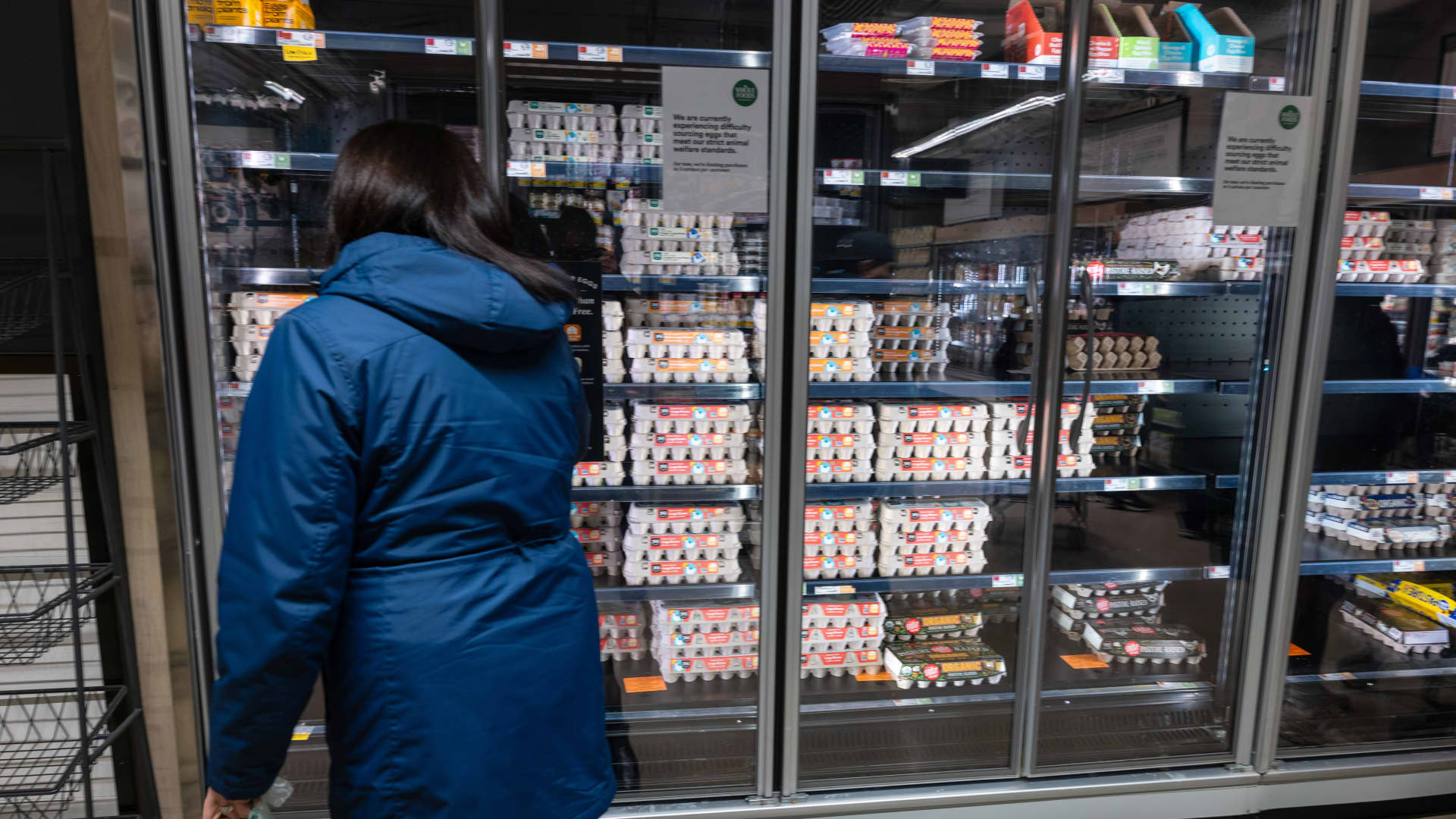
Egg cartons are seen in a grocery store with a notice indicating that purchase limits will soon be imposed due to the ongoing impact of bird flu on the egg market, as of February 10, 2025, in New York City.
Spencer Platt | Getty Images
The January consumer price index (CPI) report is anticipated to reveal a similar narrative: once again, inflation is expected to miss the Federal Reserve’s targets, raising numerous questions about potential future developments.
Rather than seeking optimism from the headline figures, which are not projected to show significant changes from December, market analysts will closely examine the underlying data for trends that may indicate when the Fed might be able to resume lowering interest rates.
“Inflation remains stubbornly above the target, with an upward bias, economic activity is robust, and the job market seems to have stabilized around full employment levels,” remarked Stephen Juneau, an economist at Bank of America. “If our January CPI estimate is accurate, it will further support the argument for the Fed to maintain its current stance.”
Bank of America comes across as one of the more cautious voices on Wall Street regarding the expectations of further easing from the Fed.
The bank’s economists predict that the Fed will hold rates steady throughout the remainder of the year and potentially beyond, as inflation stays elevated, the job market remains healthy, and the economy generally avoids complications that would require cuts to the interest rate. In contrast, traders believe the Fed might implement a quarter-point reduction in July and then remain unchanged, as indicated by CME Group data.
For the immediate future, Bank of America’s predictions align closely with Dow Jones’ expectations for January CPI: an increase of 0.3% for the overall index and a year-over-year inflation rate of 2.9%, unchanged from December. The core numbers, excluding food and energy, are anticipated at 0.3% and 3.1%, slightly down from the 3.2% reported in December.
From a detailed perspective, projected increases are likely driven by rising car prices, auto insurance, and communication costs, according to Goldman Sachs. The firm expects only slight downward pressure stemming from airfares and the rent-related categories that comprise roughly one-third of the CPI calculation, which have been primary contributors to inflation exceeding the Fed’s 2% target.
The situation is set to become increasingly complex from this point forward.
Cautious Optimism Amid Tariff Challenges
While economists predict a notable decline in inflation from several key sectors, President Donald Trump’s tariffs may counteract some of those trends, posing a risk of inflationary pressure.
“Looking ahead, we foresee additional disinflation in the next year as the auto, housing, and labor markets rebalance, though this may be offset by heightened tariff policies,” Goldman Sachs analysts noted in their forecast.
Despite these concerns, recent news has offered some glimmers of hope. The University of Michigan’s consumer survey revealed an unexpected rise in inflation expectations, yet other metrics suggest a softer outlook overall.
The January report from the National Federation of Independent Business indicated that only 18% of small business respondents identified inflation as their primary concern, marking the lowest figure since November 2021. Moreover, the Cleveland Fed’s first-quarter Survey of Firms’ Inflation Expectations demonstrated that CEOs anticipate a CPI rate of 3.2% over the coming year, a significant reduction from the previous quarter’s 3.8% estimate.
In light of the mixed signals, the Fed is expected to maintain its current course.
On Tuesday, Fed Chair Jerome Powell stated that the central bank is in no hurry to cut rates further, while Cleveland Fed President Beth Hammack highlighted the persistent inflation risk influenced by tariffs as a rationale for holding steady.
“Although monetary policy should look ahead, forecasts can never replace actual data. Or as they might say in Jerry Maguire, ‘show me the low inflation,'” Hammack concluded.









